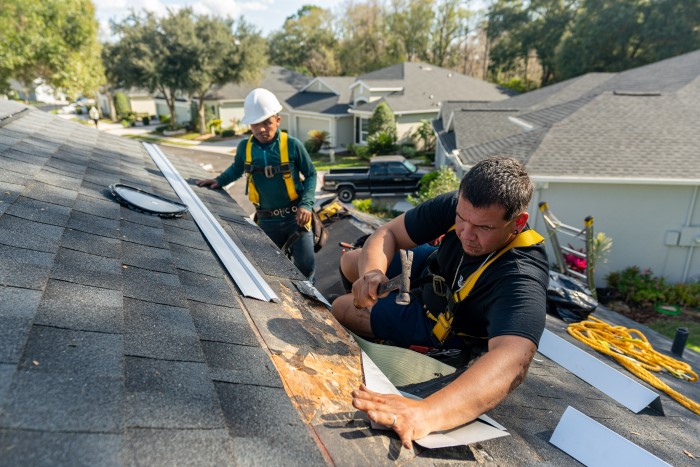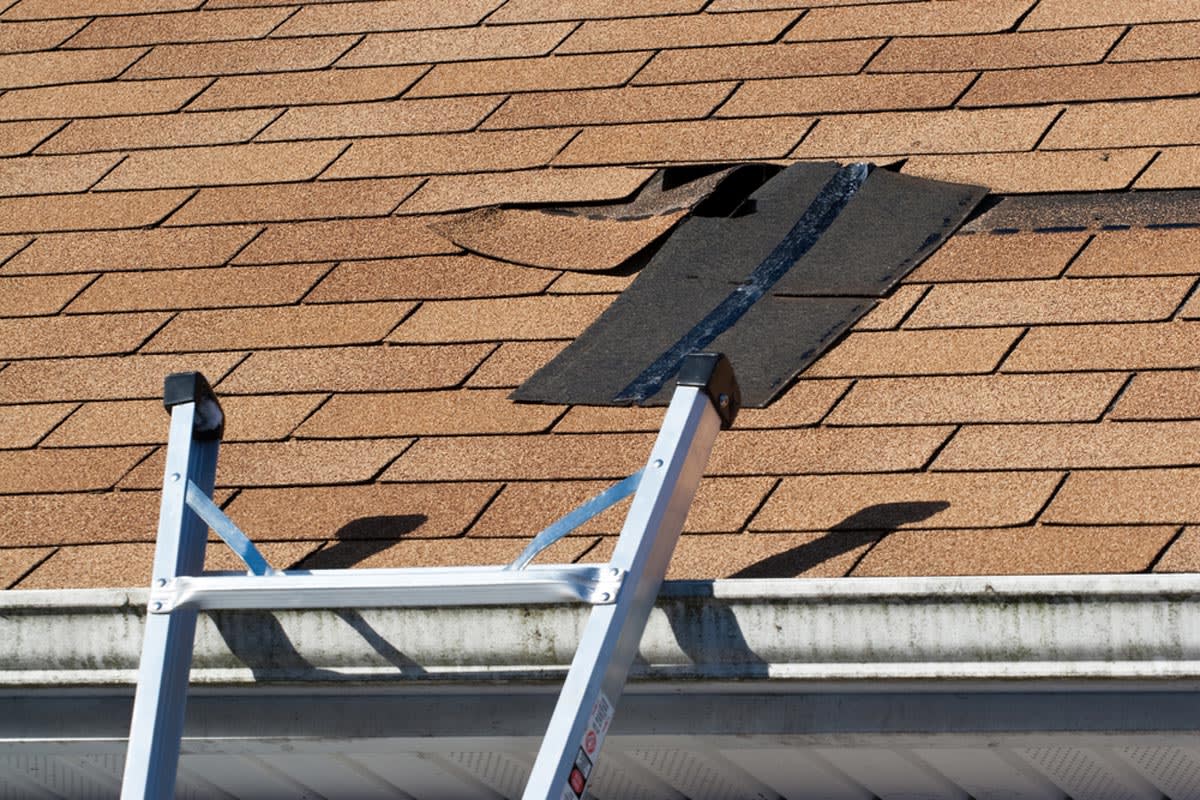Roofing Companies Oahu: Relied On Professionals for Your Roofing Needs
Roofing Companies Oahu: Relied On Professionals for Your Roofing Needs
Blog Article
Comprehending the Different Kinds Of Roof Coverings: A Comprehensive Guide for Homeowners
With a variety of alternatives-- varying from the standard gable to the contemporary level-- each kind provides unique benefits and challenges that need to straighten with the property owner's particular demands and ecological factors to consider. As we discover the details of various roof covering types, it comes to be apparent that one dimension does not fit all; the right choice may stun you.
Saddleback Roof
Saddleback roofs, defined by their triangular form, are amongst one of the most prominent roofing styles due to their simpleness and efficiency in shedding water and snow. This style features 2 sloping sides that satisfy at a ridge, enabling reliable water drainage and reducing the threat of water build-up. The high pitch commonly linked with saddleback roofs enhances their capacity to handle heavy precipitation, making them suitable for different climates.
In addition to their practical benefits, gable roofs supply aesthetic convenience. They can be adapted to various architectural designs, from standard to modern homes. The layout can additionally suit additional functions such as dormer windows, which enhance all-natural light and ventilation in the attic room.
Additionally, saddleback roofs offer sufficient space for insulation, contributing to power performance. House owners can pick from a variety of roof products, including asphalt tiles, steel, and ceramic tiles, even more improving customization alternatives.
Regardless of their advantages, saddleback roofs may need added assistance in locations vulnerable to high winds or hefty snowfall. In general, the gable roof remains a favored selection due to its mix of capability, resilience, and aesthetic appeal.
Apartment Roofs
Flat roof coverings are usually acknowledged for their minimal design and functional applications, particularly in commercial and commercial settings (oahu roofing). These roof coverings feature a virtually horizontal or horizontal surface, which enables simple building and construction and flexible space application. While they may do not have the visual charm of pitched roofs, level roofs offer countless benefits, particularly in urban atmospheres where making the most of area is critical
Among the key benefits of level roofing systems is their accessibility. House owners can utilize the roof space for numerous objectives, such as roof gardens, balconies, or solar panel installments. Additionally, flat roofs are generally much more economical to maintain and set up contrasted to their sloped equivalents, as they need less products and labor.
Typical products used for level roofings consist of built-up roof covering (BUR), customized bitumen, and single-ply membranes, each offering distinct advantages. In general, flat roofings offer as a practical and versatile choice for numerous homeowners and businesses alike.
Hip Roof Coverings
Hip roof coverings are defined by their sloped sides that assemble at the top, developing a ridge. This layout stands out from gable roof coverings, as all 4 sides of a hip roofing system slope downwards towards the wall surfaces, giving an extra secure framework. The angle of the slopes can vary, enabling flexibility in building aesthetics and functionality.
Among the main advantages of hip roof coverings is their capability to endure hefty winds and unfavorable weather conditions. The sloped surfaces allow better water drain, decreasing Source the risk of leakages and water damage. Additionally, hip roofs supply boosted attic room area, which can be used for storage and even exchanged livable areas.
However, constructing a hip roofing can be extra complex and pricey than easier roofing types, such as saddleback roofs. The added product and labor involved in developing the inclines and making sure proper structural integrity can bring about higher expenditures. Despite these disadvantages, numerous property owners prefer hip roofings for their sturdiness, aesthetic allure, and possibility for energy efficiency.
Mansard Roofings
Mansard roofing systems, typically acknowledged by their unique four-sided design, function two inclines on each side, with the lower incline being steeper than the top. This building design, originating from France in the 17th century, is not just aesthetically attractive however practical, as it makes best use of the useful room in the top floors of a structure. The high reduced incline enables even more clearance, making it a perfect option for lofts or attics, which can be converted into living spaces.
Mansard roofing systems are identified by their convenience, accommodating numerous building designs, from conventional to contemporary. They can be built with different materials, including asphalt roof shingles, slate, or metal, providing property owners with a variety of choices to suit their budgets and choices. Furthermore, the style allows for the integration of dormer home windows, improving all-natural light and ventilation in the top degrees.
Nonetheless, it is necessary to consider the possible downsides. Mansard roofing systems might require more maintenance due to the intricacy of their style, and their steep slopes can be testing for snow and rainfall runoff. Overall, mansard roof coverings incorporate beauty with usefulness, making them a popular option among home owners looking for unique building functions.
Lost Roofing Systems
As homeowners significantly seek simplicity and performance in their architectural designs, lost roof coverings have actually emerged as a preferred selection. Characterized by a solitary sloping plane, about his a shed roofing provides a minimalist visual that complements various home designs, from contemporary to rustic.
Among the key benefits of a shed roofing is its simple building, which often converts to decrease labor and material costs. This design allows for reliable water drain, reducing the threat of leakages and water damages. In addition, the vertical slope gives sufficient space for skylights, boosting all-natural light within the inside.
Shed roofings additionally provide convenience in regards to use. They can be successfully integrated into additions, garages, or exterior structures like sheds and structures. Furthermore, this roofing system design can fit different roof covering materials, consisting of metal, asphalt shingles, and even environment-friendly roof coverings, aligning with environment-friendly efforts.
However, it is vital to consider local climate conditions, as heavy snow tons might necessitate adjustments to the roof covering's angle or framework. Generally, dropped roofing systems provide a sensible and cosmetically pleasing alternative for home owners looking to make the most of performance without jeopardizing style.
Verdict


Gable roofings, identified by their triangular form, are amongst the most popular roof styles due to their simplicity and performance in dropping water and snow. oahu roofing. The steep pitch frequently linked with gable roofing systems boosts their capability to deal with heavy rainfall, making them ideal for numerous environments
While they might do not have the aesthetic charm of pitched roof coverings, level roofing systems provide numerous benefits, specifically in metropolitan environments where making best use of area is critical.

Report this page